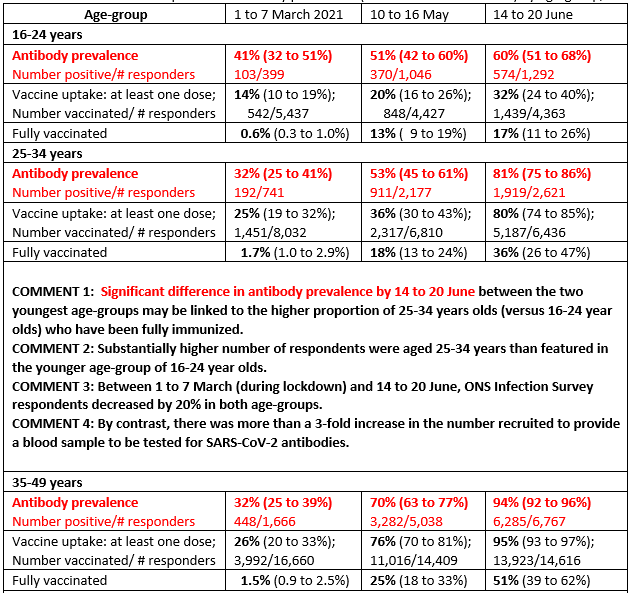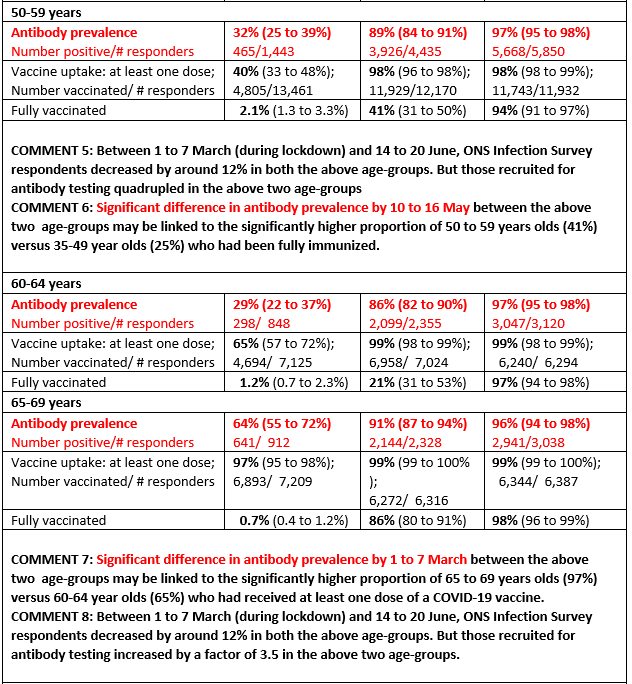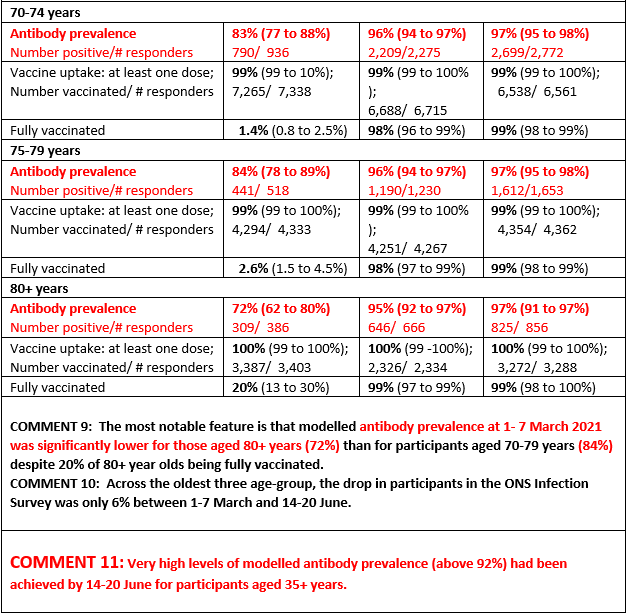The Office for National Statistics (ONS) have released the latest report from the COVID-19 infection survey, looking at antibody and vaccination data for the UK.
Prof Sheila Bird, Formerly Programme Leader, MRC Biostatistics Unit, University of Cambridge, said:
“Moderately time-varying but generally low response rates to the ONS Infection Survey in the four nations are less likely to hinder age-specific comparisons within-country over time, as shown in Table 1 for England. As national estimates, however, they may be problematic.
“The correction that the ONS Infection Survey team makes to account for low response rates essentially assumes that those who do respond are representative for those who do not. That assumption is seldom true in practice and, if non-responders outnumber responders (eg 60: 40 or 80:20 or worse), the resulting national estimates for householders may still be systematically biased.
“Interestingly, ONS Infection Survey makes an additional check by comparing age-group-specific vaccination uptake, as reported by its respondents, versus the National Immunisation Management Service (NIMS) for England.
“For vaccine uptake we merge our self-reported vaccination data from the sample with data from the National Immunisation Management Service (NIMS). NIMS is the System of Record for the NHS COVID-19 vaccination programme in England.“
“However, the upshot of this “merger”, which applies for England only, is not explained in the Methodology paper that accompanies today’s release. In particular, I wish to know to what extent ONS-responders’ vaccine-uptake by age-group deviates from the uptake as measured by the National Immunisation Management Service (NIMS). No information is provided by ONS Infection Survey on the vaccine-type that its respondents received versus a) as-logged-for-them in NIMS or b) as measured for their age-group in NIMS.
“England’s lack of transparency about vaccine-type by age-group per roll-out week should be put an end to by the new Secretary of State for Health and Social Care. Especially as my final COMMENT on the table below is that, irrespective of vaccine-type, those aged 35+ years had modelled antibody prevalence of over 90% by 14-20 June 2021, a fantastic achievement.
“Other comments by age-group track the importance of being fully immunized for achieving high antibody prevalence; and note an early antibody prevalence disparity for those aged 80+ years versus 70-79 years . . . despite the higher percentage of 80+ years (20%) who were fully immunized by 1-7 March.
Table 1. Modelled vaccine uptake and antibody prevalence (95% confidence intervals) by age-group, as reported by ONS Infection Survey for England



All our previous output on this subject can be seen at this weblink:
www.sciencemediacentre.org/tag/covid-19
Declared interests
None received.